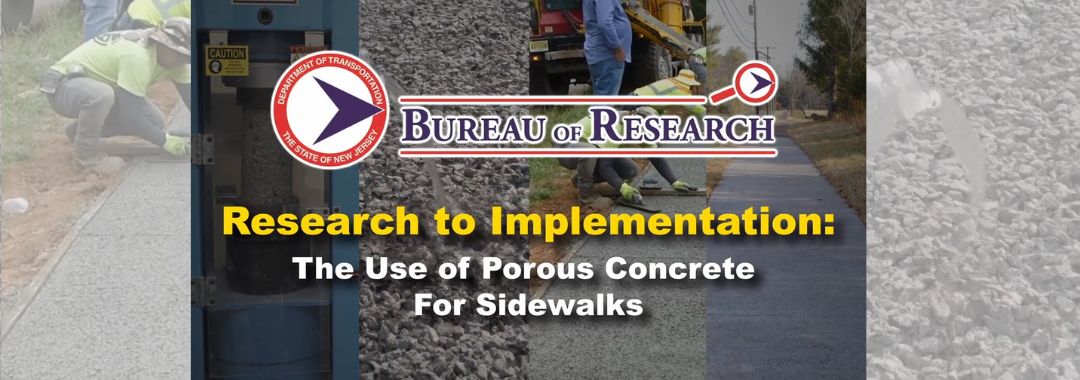This Research to Implementation video presents an example of NJDOT-sponsored research and the effect such research has in addressing transportation-related issues within the State.
Pervious (or porous) concrete has been gaining popularity as a potential solution to reduce the amount of impermeable surfaces associated with sidewalks, reduce puddling, and potentially slow storm water surface runoff. As important as these benefits are to surface runoff mitigation, concerns exist as to the ability of pervious concrete to provide sufficient structural support and longevity for the expected service life of the sidewalks as well as its life cycle costs. The composition of pervious concrete can limit its mechanical strength and present challenges in its maintenance to achieve the expected service life.
With support from NJDOT’s Bureau of Research, researchers have looked at the benefits and challenges to utilizing porous concrete for sidewalks, and conducted a follow-up demonstration project. For more information about this research and the demonstration project, see: The Use of Porous Concrete for Sidewalks and Implementation of Porous Concrete for Sidewalks in New Jersey.
The Research to Implementation video series promotes the benefits of funded research to increase the safety of the traveling public, reduce costs, and increase efficiency.

